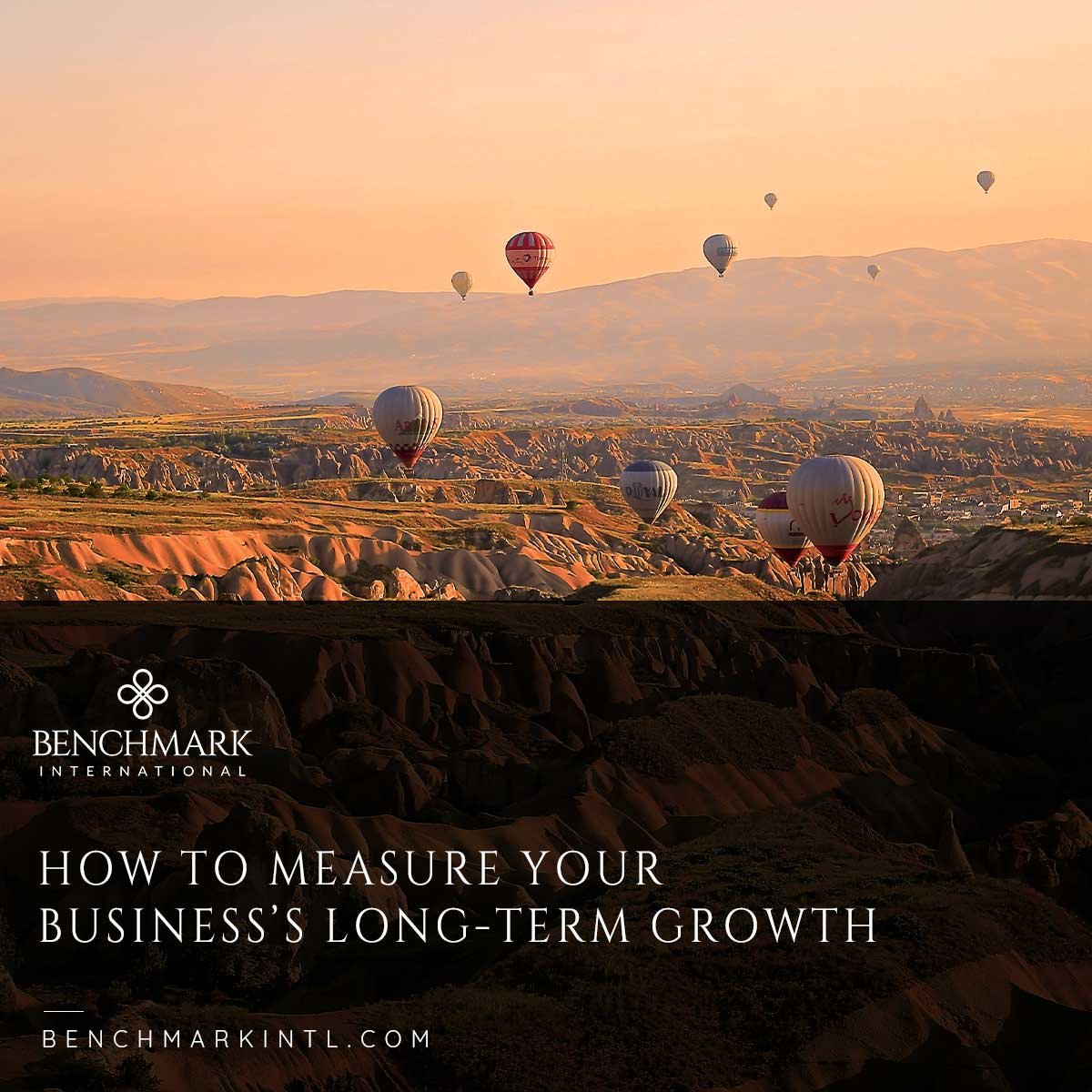
It is essential to know how to correctly measure the long-term growth of your business because it is a key factor in determining an accurate company valuation, which determines how much money you can make in the sale or merger of your business.
Possible buyers, partners, and investors will want to see documentation of how proficiently the long-term strategic health of your company can sustain its current levels of success as well as what growth opportunities are feasible. This means looking at several aspects of your business, such as innovation and technology, customer retention rate, changing customer preferences, and long-term relationships with vendors and suppliers.
Of course, it isn’t always a simple task to gauge this long-term growth, but some specific qualitative metrics and milestones can be applied to help you do it more accurately. If your revenue is consistently growing, that is positive data, but that does not mean that future growth is guaranteed to continue. To keep that growth on track, your business needs to be able to continue to produce goods or provide services and fulfill an ongoing demand while effectively fending off any competition. You must show that you can maintain your edge among similar businesses.
Market stability in your business’s particular sector can also impact future growth. Regulated markets can offer stability, but growth may be limited. If your company operates in an expanding industry, you may look for better long-term growth opportunities. It all depends on how several factors come into play within your sector. There are several different ways that long-term growth can be assessed.
Sustainable Growth Rate
The sustainable growth rate is the projection that long-term company growth will match the rate at which stockholder equity grows. It is the highest rate at which a company can grow without assuming more debt. You can calculate the sustainable growth rate as follows:
Return on Equity (ROE) x (1 - dividend payout ratio).
The ROE ratio can be adjusted for any dividends that are paid because only retained earnings can be used to grow the company.
Financial Analyst Evaluations
One of the easiest ways for you as a business owner to measure your long-term growth is to enlist the help of reputable financial analysts. This route means you don’t have to do any work. They will delve into all the aspects of your business and project how they think it will perform over the next few years. Most are highly educated and experienced in doing these assessments, which is good for you. However, they can tend to be overly optimistic, so you need to maintain a realistic perspective. It can also be helpful to use the advice of an analyst in conjunction with some of the other methods listed here.
Return on Equity (ROE)
One of the key ways to measure future growth is to look at your company’s return on equity. ROE is a profit a business makes as a percentage of stockholders’ equity. This can be found on the company’s balance sheet, listed under “stockholders’ equity” (or you can find it in the annual report).
Begin with the start of the year, and divide the net earnings by the stockholders’ equity. Then multiply that by 100 to calculate the ROE percentage. Measuring ROE is an excellent way to predict how much any investment will pay off in the future, but it is not always so simple. This is because some earnings could be paid out as dividends instead of reinvesting, and some profits may have to be allocated to maintenance and upkeep, so they don’t contribute to growth. It is also important to note that a high ROE is not always good news. That is because, in some cases, it can be a red flag that there are issues such as too much debt or erratic profits.
Past Earnings Per Share (EPS) Growth
You can also measure the future growth of your company by assessing how quickly it has grown its earnings over the last 10 years. EPS essentially means profits available to each shareholder (per share), using the following formula:
EPS = (Earnings) / (Shares Outstanding)
You should know, though, that one cannot simply apply historical earnings growth to future years. Why not? As a business grows, keeping up a high growth rate becomes more challenging. It is usual for growth rates to fall over time. You may have heard of something known as the Law of Large Numbers. It means that a large organization that is rapidly growing simply cannot sustain that growth year after year. This is more common with huge blue chip corporations than lower- to middle-market companies.
Plowback Ratio or Retention Rate
You may have also heard of something called the plowback ratio. It is the percentage of net earnings that your business can reinvest after dividends are paid out to shareholders. Say your company has an ROE of 8%. Then, if you reinvest all of its net earnings, it can grow at a rate of 8%.
Therefore, if your company pays 25% of net earnings to stockholders as dividends, you are left with 75% of the net earnings for reinvestment, so the plowback ratio is 75%.
It is more common for younger businesses to have higher plowback ratios than more established businesses. This is because faster-growing companies tend to be more intensely focused on business development, and older companies don’t need to reinvest profits as much to expand operations because they’ve already done it.
Free Cash Flow (FCF) Per Share
Free cash flow per share is commonly used in valuation models for publicly traded stocks. This is because stronger FCF tends to correlate to more positive future earnings. FCF is the precise representation of proper cash flow available to shareholders at any time. Earnings don’t represent the actual cash flow of a company for two reasons. Accounting must be adjusted for tax purposes and to indicate better financial results of operations from year to year. Plus, large capital expenditures intended as investments for long-term growth can eat into short-term cash flow, making it look like performance is down when it is not.
Free cash flow is widely considered reliable because it indicates how much cash flow investors are expected to get back. Your company can have solid earnings, but at the same time, it may need continuous capital to sustain long-term operations. This can significantly curb the actual cash flow available that shareholders can receive.
How Can We Help?
Our M&A experts at Benchmark International are here to assist you with your needs as a business owner looking to retire, grow, transition, or sell your company. Please feel free to contact us at your convenience to discuss your options and how we can help you achieve your next level of success.
Americas: Sam Smoot at +1 (813) 898 2350 / Smoot@BenchmarkIntl.com
Europe: Michael Lawrie at +44 (0) 161 359 4400 / Lawrie@BenchmarkIntl.com
Africa: Anthony McCardle at +27 21 300 2055 / McCardle@BenchmarkIntl.com
ABOUT BENCHMARK INTERNATIONAL:
Benchmark International is a global M&A firm that provides business owners with creative, value-maximizing solutions for growing and exiting their businesses. Benchmark International has handled over $10 billion in transaction value across various industries from offices across the world. With decades of M&A experience, Benchmark International’s transaction teams have assisted business owners with achieving their objectives and ensuring the continued growth of their businesses. The firm has also been named the Investment Banking Firm of the Year by The M&A Advisor and the Global M&A Network as well as the #1 Sell-side Exclusive M&A Advisor in the World by Pitchbook’s Global League Tables.
Website: http://www.benchmarkintl.com
Blog: http://blog.benchmarkcorporate.com

 Benchmark International
Benchmark International  Benchmark International
Benchmark International 







